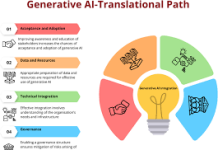Current Trends in Modern Website Development
The field of website development has been evolving rapidly, incorporating new technologies and shifting towards a more user-centric approach. As businesses increasingly recognize the value of their online presence, modern websites are being designed not just to provide information, but also to offer an engaging and seamless user experience that converts visitors into loyal customers. Below, we discuss some of the prevailing trends in website development that are currently shaping the industry.
1. User Experience Focused Design
In today’s digital world, a **user-centric design** is paramount. The emphasis is on creating a website that caters to the needs of visitors, ensuring they have an intuitive and enjoyable experience. Features like **accessibility** are no longer optional but a necessity—websites now include support for screen readers, keyboard navigation, and other tools that make them accessible to all users, including those with disabilities.
Responsive design is another major component of a user-focused approach. With users accessing websites from multiple devices—smartphones, tablets, and desktops—websites need to be flexible enough to offer an optimal experience across all screen sizes. Ensuring consistency in layout and usability improves engagement and decreases bounce rates.
2. Speed and Performance Optimization
Website speed and performance are critical in determining a site’s effectiveness. Users expect fast-loading pages, and even a delay of a few seconds can result in a higher bounce rate and lost potential customers. Performance optimization techniques such as image compression, server response improvements, and efficient code handling are now integral to website development.
Google’s Core Web Vitals, which measure essential aspects like loading speed, interactivity, and visual stability, are used to assess user experience. Prioritizing these metrics not only enhances user satisfaction but also positively impacts SEO, making websites more visible to potential customers.
3. Interactive Features and Personalization
Modern websites are increasingly incorporating interactive features to provide a more immersive experience. Instead of static content, websites now use scroll-triggered animations, hover effects, and interactive graphics to captivate users and make navigation more enjoyable.
Personalization is also gaining traction—dynamic content that changes based on user behavior, preferences, or demographics helps create a unique experience for each visitor. Chatbots have become popular for offering real-time support, addressing common questions instantly, and helping users navigate the website, thus improving the overall user experience. 홈페이지 제작 업체
4. Rich Storytelling and Visual Content
The role of content in website development has expanded beyond conveying information to establishing an emotional connection with users. Storytelling is now an integral part of website content strategies. By using videos, infographics, and animations, brands are crafting narratives that make their messages more relatable and impactful.
Content today is more interactive and visually engaging, which helps users absorb information more effectively. This type of storytelling not only keeps users on the site longer but also helps to build a stronger connection with the brand, making them more likely to take the desired actions.
5. Built-In SEO and Seamless Marketing Integration
Search Engine Optimization (SEO) is no longer a separate task but a key consideration during website development. From the outset, websites are designed with SEO-friendly architecture, including optimized URLs, structured data, and relevant meta tags, which help improve visibility on search engines.
In addition to SEO, websites are increasingly integrating digital marketing tools directly into their structure. This includes features like social media sharing, email subscription forms, and promotional landing pages, which all work to streamline marketing efforts and enhance lead generation. This seamless integration helps businesses create a cohesive digital marketing strategy that drives engagement and conversions. 홈페이지 제작 업체
6. Security by Design
With rising concerns around data privacy and cybersecurity, website security has become a fundamental aspect of modern website development. Features such as SSL certificates, two-factor authentication, and data encryption are now common to protect user information and build trust.
Websites also need to comply with regulations like GDPR to ensure transparency in data handling. A secure website not only protects the business from potential threats but also helps in building customer trust, which is crucial for increasing conversion rates and long-term customer loyalty.
7. Utilizing Analytics for Ongoing Improvement
Analytics tools have become indispensable in website development, allowing businesses to understand user behavior and make informed decisions for improvement. Tracking metrics such as traffic sources, session duration, and conversion rates provides valuable insights into how users interact with the website and what can be optimized for better performance. 홈페이지 제작 업체
The use of data-driven insights allows for continuous improvement in content, design, and overall functionality. By leveraging analytics, businesses can keep their websites relevant and effective in meeting user expectations and achieving business goals.



